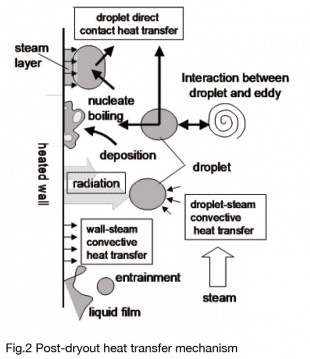- Home
- Faculty Members
- Department of Applied Nuclear Technology
- Keizo Matsuura
Faculty of Engineering
Department of Applied Nuclear Technology
- Key words
- Thermal hydraulics, Gas-Liquid Two phase flow, Computational Fluid Dynamics(CFD), Critical Heat Flux, Nuclear reactor safety, Severe Accident

Doctor of Engineering / Professor
Keizo Matsuura
Education
Department of Engineering, Faculty of Electric Engineering II, Kyoto University
Kyoto University Graduate School of Engineering, Engineering Master Program
Kyoto University Graduate School of Engineering, Engineering Doctral Program
Professional Background
Nuclear Fuel Industries,Ltd. Kumatori Works. General manager of Fuel Engineering Development, General manager of Environmental Safety
Consultations, Lectures, and Collaborative Research Themes
Technical consultant and analysis of thermal hydraulic phenomena, Design of thermal hydraulic equipment
Main research themes and their characteristics
「Numerical analysis study of droplet behavior in mist flow and annular mistflow」
Annular mist flow and mist flow are important flow regime in loss of coolant accident and severe accident. So droplet behavior in these regimes has been studied by many researchers, but only correlations have been developed by experiments which were carried out under limited conditions. We introduced numerical analysis method of droplet behavior for droplet turbulent diffusion and droplet deposition. We developed many models for droplet numerical analysis method, for example, droplet-turbulent eddy interaction model. We verified the model accuracy using droplet experimental database. Furthermore for liquid film dryout analysis, we developed droplet behavior model considering droplet entrainment from liquid film. We also developed the model considering the effect of obstacle. So we demonstrated the possibility of nuclear fuel critical heat flux analysis under spacer grid condition
「Post-dryout heat transfer analysis based on droplet behavior」
Post-dryout heat transfer mechanism is very important one which is observed in many industrial appliances. Accurate wall temperature prediction in post-dryout condition is essential to thermal design. So accurate post-dryout heat transfer model improves BWR fuel thermal performance. Many correlations for poet-dryout heat transfer were developed but reliable correlations have not been developed yet. The reason of these situation is that post-dryout heat transfer includes many complicated heat transfer phenomena and that droplet and steam are in non-equilibrium condition. We introduced Eulerian-Lagrangian method in which many droplets trajectories are calculated and in which the interaction between droplets and flow-heat field is considered. So we could demonstrate the possibility of this method which can predict steam and droplet temperature in post-dryout experiments.
Major academic publications
K.Matsuura,I.Kataoka,K.Mishima
“Post-Dryout Heat Transfer Analysis Model with Droplet Lagrangian Simulation” JSME International Journal SeriesB, Vol.49, No.2.(2006)
K.Matsuura, I.Kataoka, A.Serizawa
“Annular Dispersed Flow Analysis Model by Lagrangian Method and Liquid Film Cell Model” The 10th International Topical Meeting on Nuclear Reactor
Thermal Hydraulic (NURETH-10) (2003)


